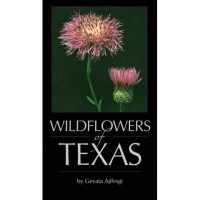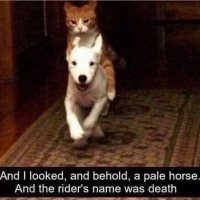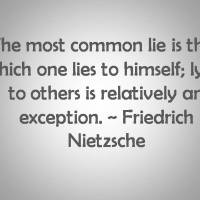North American History and Some Confusion Over Canada
We read through history chronologically, something those who have read this blog for awhile are perhaps well aware. In doing so, we tend to skip around the globe a tad. I try to redirect the kiddo to maps, but in the case of North America, I failed somewhere…
“Wait, where’s Canada?”
“North.”
“I don’t see it.”
“It’s north of the United States.”
“Canada isn’t a state?”
As a homeschool mom my face palm was directed one hundred percent at myself. “No, baby, it’s its own country.”
I know how why the confusion occurred. Well, let’s back up. We’ve been reading, a LOT…
Saint Isaac and the Indians – Milton Lomask
When the French were flocking to North America and colonizing the forests and St. Lawrence River, along with them came Jesuit missionaries intent on sharing the word of God with the Mohawks (Iroquois) and Huron people. Some, were martyred by the very people whose souls they were trying to save. Isaac Jogues, was such a man. He was later sainted by the Catholic Church.
We are not Catholic, but we do value Catholic church history as an important part of education. I try to keep a well balanced and diverse selection of biographies as we study so we can see a complete picture of the world and all God’s creation. When looking for elementary friendly biographies on those who have been sainted, I find Ignatius Press a reliable source. Lomask’s book didn’t fail us and we were enthralled with Isaac’s story.
The Courage of Sarah Noble – Alice Dagliesh
Kiddo read this on her own, then I read it immediately afterward, so we could discuss. I’m getting to the point where I hand her more books to read alone, not because I’m reading out loud less, but so we have more time to read meatier things aloud while she tackles the easy stuff. She enjoyed this one and made a lap book off a kit I found on Teachers Pay Teachers. It’s not my favorite, but I definitely think it has value on an elementary reading list.
The Matchlock Gun – Walter D. Edmonds
This is the second time we’ve read this book. The first time we paired it up with a trip to the science museum for a firearms through the ages exhibit. Kiddo was excited to revisit it and we looked through old pictures from when we got to peruse cases and cases of antique matchlock guns. This is another fantastic “living book” to read during a study of early America.
Who Was Blackbeard? – James Buckley Jr.
Kiddo hates any book with “bobble head people” on the cover. When she was younger I used to put post-it notes over their faces. She’s getting better about ignoring the awkward caricatures on her own and was able to put a lot of personal preference aside for the sake of a good pirate story. The Who Was series is perfect for filler when you just can’t find a better biography on a person readily available.
Ben and Me – Robert Lawson
I love Robert Lawson books. So does Kiddo. But it wasn’t just Robert Lawson that captivated her for this one… mice make for riveting anthropomorphized creatures. We both just love a good rodent in the lead. For Kiddo there was another aspect… the week she read Ben and Me, she actually binge read about six Ben Franklin biographies. She just can’t get enough of the guy.
The D’aulaires have a fantastic picture book about him, we are on a mission to own everything they wrote, and there were a handful of other generic chapter books on our shelves she powered through for the sake of more Ben.
While she was doing all this Ben Franklin research, I read…
Myne Own Ground: Race and Freedom on Virginia’s Eastern Shore – T. H. Breen
…which was utterly brilliant. I’ve never read such an honest, objective account of the slave situation in colonial Virginia. It is single handedly the best race relations book I’ve read to date. And I’ve read a lot of them over the years, trying to understand everyone. Kiddo obviously didn’t read this one this time, but I definitely plan on including it on a high school reading roster.
This is where I derailed, while she focused on Ben, I was reading about the English Republic between 1649-1660. I read a book on Charles I by Leanda de Lisle, a book about Roger Williams by James A. Warren, a biography on Henrietta Miaria (Charles I’s wife) by Alison Plowden, and a biography on Charles II by Martyn R. Beardsley.
During this time we discussed Ben Franklin’s travels to France. We talked about a book we read a few years ago called Madeleine Takes Command about a French girl at a Fort in Canada. We discussed the politics of what was going on between North America and Europe… She likes to understand people and things they fight for, I didn’t catch on that the borders were unclear.
Benjamin West and His Cat Grimalkin – Marguerite Henry
My husband read Brighty of the Grand Canyon out loud before bedtime as a family. It was lovely. He has a lovely reading voice and Kiddo and I just love Marguerite Henry. Brighty is set during Teddy Roosevelt’s time, so it was a little misplaced, but delightful. Benjamin West was a perfect way to drag ourselves back to our timeline, and it was required reading for her history class at Atrium (our co-op she attends and I teach at once a week).
We loved this one and it put us both in the mood to paint, we watched a YouTube slideshow of his work, so we would be familiar. While feeling artsy, we read a biography on Maria Merian, The Girl Who Drew Butterflies. We revived our nature journaling.
But Benjamin West also gave us an opportunity to discuss Quakers. We hashed out the similarities and differences in our beliefs after she pointed out that they’re a bit like me… luddites. My kid likes to call me out for my avoidance of technology. Ironic, considering I’ve written a blog for over a decade.
Amos Fortune, Free Man – Elizabeth Yates
This is one of the most beautiful stories I’ve ever read. I’m so glad the Kiddo and I got to share reading it for our first times together. She asked if we could visit his historical landmark, and I definitely want to add that to our list of vacation goals.
Ethan Allen: Green Mountain Rebel – Brenda Haugen
I love the Signature Lives biographies. They’re such great resources. The cool thing about reading about people like Ethan Allen is the opportunity to really discuss flaws and virtues in human beings. How most people have both. Some people teeter into the realm of so flawed they become evil and some are so virtuous they become sainted… and some, like Ethan Allen, have a bizarre mix of both. Mischievous to a fault. Brash. Heroic. Terrible. Principled. A Menace. A Patriot. A Legend.
George Washington then became the highlight of our weeks… we read George Washington’s Teeth, Phoebe the Spy, we talked about the spy ring (an endless fascination because we descend from Townsends, but not those Townsends), The Winter at Valley Forge: Survival and Victory, George Washington’s Breakfast, Cinnabar, the One O’Clock Fox.
Calico Captive – Elizabeth George Speare
My first introduction to Elizabeth George Speare, I believe, was The Witch of Blackbird Pond. I can’t wait to share that with her; but Kiddo’s was Calico Captive. She was riveted. “One more chapter?” But the chapters are long. “Please?” We spent hours, against Charlotte Mason’s advice of limiting book binging, we binged.
Note: Calico Captive involves Indian capture, being sold to the French, living as a prisoner in CANADA.
Not to let a good theme go to waste, we also read Indian Captive: The Story of Mary Jamison by Lois Lenski.
We brushed up on our Benjamin Banneker knowledge from the last time we studied him, and then dived into…
Early Thunder – Jean Fritz
I just can’t get enough Jean Fritz. This particular title might be my favorite Jean Fritz yet, and I really do love them all. I thought it would take us longer to finish, but it became another “Please read another chapter” book. We finished this one even faster than Calico Captive.
Early Thunder follows our underlining theme for history this year which has largely been: “It’s Complicated.” I loved how perfectly it addressed all the emotions of the people in Salem as they wanted to be good citizens but also govern themselves. What makes a good citizen? Someone who sides with their neighbors or someone who is loyal to a distant government?
From an educational stand point it helped the Kiddo sort out who the Whigs and Tories were, what they stood for and why. It gave us an opportunity to lay out the monarchy of England, the purpose of Parliament (remember the Magna Carta? What did that mean? How is that affecting the 1700s?). It set her up for revisiting the Declaration of Independence with a clearer view.
From a spiritual maturity and empathy stand point, it helped her wrestle with the idea that we cast hindsight judgements on historical figures all day, but do we really know what we would do? Do we really know what we would choose when placed in those historical figure’s shoes? The book was truly a roller coaster ride of deep thinking for a kid, and I’m so glad we made time for it.
This doesn’t even come close to wrapping up our semester studies, I haven’t even caught up to where we are on our reading list as of the posting of this blog… we tackled Thomas Jefferson, Alexander Hamilton, James Madison, Johnny Appleseed, and more…
But it does bring me to the moment of my point–Canada–and why we now have a Geography curriculum.
“Mom, I might regret this, but… can we get a geography curriculum?”
I laughed. Heartily. And then proceeded to find and order what extra bits I needed to complete something I discovered I already owned half of.
Beautiful Feet: Geography Through Literature Pack
We already had a few of Holling’s picture books, I only had to order the guide, a book, and the maps. I’m so glad I did. We’re in love.


And, we understand what’s going on with Canada now.
Mysteries of History Part Three: Roanoke
The world is full of things we’ll never know and one thing I do know is that the more I learn, the more I realize I don’t know.
As a child, the story of Roanoke was glossed over in history classes. It maybe earned itself a whole paragraph in a textbook… The colonists disappeared, most likely they were either slaughtered or absorbed by Native tribes. End of story. Now let’s talk about Jamestown and Pocahontas.
Wait, what?! That’s it!?
Jane Yolen’s picture book Roanoke addresses all the theories and just how big a mystery it actually is quite nicely, which I appreciate for my kid. At least she’s been given a bigger bit of bait than I had at that age. As a lifetime sucker for anything written by Jean Fritz, we’re also reading The Lost Colony together, it’s longer and one usually tackled by slightly older kids whereas Yolen’s picture book can be read in one sitting.
As far as information and writing style go, I prefer Jean Fritz––every time––and especially this time. Jean Fritz is my go to for all kids and young adult history books. We have a pretty extensive Fritz collection and still aren’t close to owning all the author’s work. I was so pleased to add The Lost Colony to our library, which in addition to beautiful illustrations, included all the most recent theories (as of 2001) and a summarization of Lee Miller’s Roanoke: Solving the Mystery of the Lost Colony.
I read Lee Miller’s book and found it completely enthralling. As a homeschool family, we pick up and take our studies pretty much everywhere, and the week of Roanoke we had the luxury of spending on the Atchafalaya Basin. The only thing that could have been more perfect would have been if we had been in the Virginia and North Carolina swamps and beaches instead of the Louisiana ones––but the ambiance for the unraveling of a sixteenth century crime was perfect.

The book truly had me on the edge of my seat, due largely because of content. The writing style, which annoyed many reviewers on Goodreads, was superfluous at times, but I got the sense that it was the genuine excitement of the author jumping full swing into storytelling mode. I find the premise she suggested not only possible, but plausible based on her presentation of evidence. It’s a great book to read to get a big picture view of both sides of the pond when it comes to early American history. Too many books seem to focus on the colonies or Europe, but rarely truly show what is happening on both sides of the globe at the same time during the era.
Miller brings everything back to Elizabeth I’s Spymaster, so naturally I had to find out if her claims could be substantiated. Up next, my findings in Stephen Budiansky’s Her Majesty’s Sypmaster: Elizabeth I, Sir Francis Walsingham, and the Birth of Modern Espionage.







